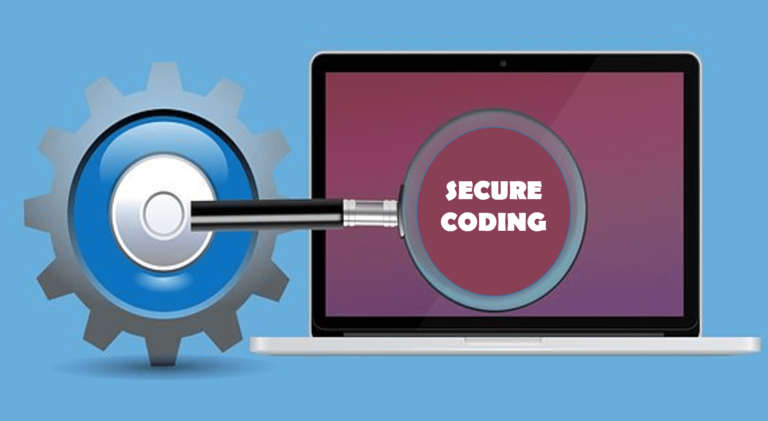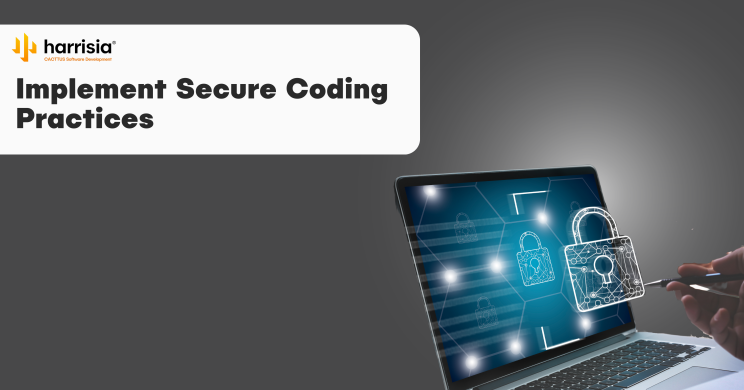Secure coding is a method of writing software and source code that’s shielded from cyber attacks. With an increasing demand for rapid delivery, most businesses forsake best secure coding standards in their software development life cycle and development process.
Such negligence will eventually negate the short term benefits of rapid distribution as clients begin to vocalize their data breaches on social media and in the courtroom.

Introduction to Secure Coding
Secure coding is an essential part of software development that focuses on incorporating security measures into the design and implementation of a code. It involves using various techniques and practices to prevent security vulnerabilities and ensure that the code is resistant to common threats such as hacking and data breaches. Secure coding is crucial for protecting the sensitive information and data of users, as well as the integrity and reliability of the software.
By adopting secure coding practices, developers can safeguard against security risks and vulnerabilities that may arise during the development process. These practices include following coding standards and guidelines, conducting regular code reviews, and implementing robust testing and validation techniques.
Why is Secure Coding Important?
. When a software developer writes this source code, they need to consider many things, such as:
- Architecture and design requirements of the application
- Code optimization and efficiency
- Code security and safety
Secure coding makes it easier for developers and programmers to weed out common vulnerabilities in their software by following certain best practices and guidelines, known as secure coding standards.
The adoption of secure coding practices is important because it removes commonly exploited software vulnerabilities and prevents cyberattacks from happening. Moreover, optimizing for security from the start helps reduce long-term costs which may arise if an exploit results in the leak of sensitive information of users.
Advantages of Secure Coding
Secure coding is the practice of writing software in a way that protects it from vulnerabilities. It’s a crucial aspect of modern software development due to the increasing prevalence of cyber threats.
Here are some key advantages of secure coding:
Protection Against Cyberattacks
- Reduced vulnerability: Secure coding helps identify and eliminate potential weaknesses in the software, making it less attractive to attackers.
- Data protection: Safeguards sensitive data from unauthorized access, theft, or corruption.
- System integrity: Maintains the software’s reliability and functionality by preventing malicious interference.
Cost-Effectiveness
- Reduced financial losses: Preventing security breaches can save significant costs associated with data recovery, legal fees, and reputational damage.
- Improved efficiency: Secure code often leads to more efficient software, as it’s less prone to errors and vulnerabilities.
- Lower insurance premiums: Organizations with strong security practices may qualify for reduced insurance costs.
Enhanced Reputation
- Customer trust: Demonstrates a commitment to protecting customer data and privacy.
- Competitive advantage: Builds a reputation for reliability and security, attracting more customers.
- Regulatory compliance: Helps organizations adhere to industry standards and regulations.
Improved Software Quality
- Increased reliability: Secure coding practices often lead to more robust and stable software.
- Better performance: Well-structured and secure code can improve software performance.
- Enhanced maintainability: Code that is written with security in mind is often easier to understand and modify.
By incorporating secure coding practices into the software development lifecycle, organizations can significantly reduce the risk of security breaches, protect their assets, and build trust with customers.
Disadvantages of Secure Coding
While secure coding is essential for software development, it does come with some challenges:
Increased Development Time and Cost
- Steeper learning curve: Developers need to acquire new skills and knowledge to write secure code, which can be time-consuming.
- Additional tools and resources: Implementing secure coding practices often requires specialized tools and resources, increasing development costs.
- Slower development cycles: The extra time spent on security testing and code reviews can extend development timelines.
Potential for Over-Engineering
- Balancing security and usability: There’s a risk of making the software overly complex and difficult to use in an effort to achieve maximum security.
- Decreased performance: Some security measures can impact software performance.
Difficulty in Keeping Up with Threats
- Evolving threat landscape: Cyber threats are constantly evolving, making it challenging to stay ahead of attackers.
- Rapidly changing security best practices: Developers need to continuously update their knowledge to address new vulnerabilities.
Limited Talent Pool
- Scarcity of skilled developers: Finding developers with strong secure coding expertise can be difficult.
It’s important to note that while these challenges exist, the benefits of secure coding typically outweigh the drawbacks. A well-balanced approach that prioritizes security without compromising usability and efficiency is crucial..
Implementing Best Secure Coding Practices
To ensure your sensitive data is always protected from cyber-attacks, the following secure coding practices should be strictly followed to ensure you have secure code:
1. Follow OWASP Guidelines
The Open Web Application Security Project (OWASP) is a non-for-profit dedicated to enforcing secure coding efforts by offering free application testing resources. The organization is most famous for its up to date publication of the top 10 web application security risks.
2. Avoid Unbounded Write Operators in C++
Unbounded read or copy operators such as “strcpy” and “strcat” in C++, do not account for the limited capacity of buffers, so they often cause buffer overflow. Instead, C++ software developers should use “strncpy” and “strncat” operators.
These operators take into account the length of all the data being written into a buffer as well as the buffer’s capacity. The result is an immediate cessation to data transfer either when the destination fails to meet these length requirements or when the buffer is filled, whichever comes first.
3. Implement Proper Input Validation
Input validation scrutinizes and validates all of the data that’s submitted through a web application. Intelligent application of input validation will stop all XSS and code injection attacks.
There are two forms of input validation, whitelisted or blacklisted.
Whitelisted validation only permits expected data to pass through a web application, Blacklisted validation is an inverse approach that prevents all black listed inputs from passing validation. Because coders cannot account for all code injection variations, whitelisted validation is the safer secure coding option.
4. Dynamic Application Security Testing
After a software has been fully developed, it should then be run through a series of cyber-attack scenarios it might encounter when deployed. This process of testing operational software is known as Dynamic Application Security Testing, or DAST.
DAST examines the functional resilience of software. If properly executed, DAST will uncover all security vulnerabilities that only surface when the software is in use. This is an essential secure coding practice that should be integrated into all software development life cycles.
5. Monitor the Security Status of Your Vendors
You may strictly follow secure coding practices and security policies but your vendors may not protect their coding with equal vigor. To prevent third-party security breaches from affecting your business, a barrier needs to be established between your internal sensitive data and your vendors.
Upguard Vendor Risk allows you to monitor the security status of all your vendors. All risks are clearly identified so that they can be swiftly remediated.
A personalized questionnaire can also be submitted to all vendors to quell any specific cyber security concerns you may have.

What Are The Risks Of Insecure Coding?
Insecure coding practices endanger customers and damage the company’s reputation. For this reason, it is important to have secure code.
- Improper logging and monitoring: Improper logging and monitoring procedures are dangerous. This makes the data vulnerable to tampering, extraction, and even destruction.
- Injection error: An injection error occurs when untrusted data is sent as part of a command or query. Attacks can trick the target system into executing unintended commands.
- Sensitive Data Exposure: Sensitive data must be properly protected, such as addresses, passwords, and account numbers.
- Cross-Site Scripting : Untrusted agents can exploit cross-site scripting flaws to execute their scripts on the target system.
- Authentication Failure: Authentication and Session Management application functionality must be implemented correctly.
Secure coding practices
Developers play a crucial role in protecting sensitive information and systems from potential threats. To ensure the security and integrity of their code, it is essential for developers to understand and implement secure coding practices. Some key practices that every developer should know include:
Input Validation
Input validation involves verifying and validating user-supplied input to ensure that it is valid and conforms to the specified format. This helps to prevent malicious attacks and vulnerabilities in the code. By implementing input validation, developers can ensure that the input is within the expected range, is the correct data type, and does not contain any illegal characters or special characters that may be used for injection attacks.

Error Handling
Error handling involves identifying and addressing potential errors or exceptions that may arise during the execution of a program. Proper error handling ensures that the code remains stable and reliable, preventing potential security vulnerabilities. In particular, secure code should implement robust error handling mechanisms that capture and log error messages, allowing developers to quickly identify and resolve any issues.

Hardcoded Credentials
Using hardcoded credentials in your code is a major security flaw that can leave your application vulnerable to attacks.

How Do You Code Securely?
There is abundant literature on secure coding best practices. For example, The Open Web Application Security Project (OWASP) has created a set of guidelines that help developers mitigate common software security vulnerabilities. Similarly, the SEI CERT secure coding standards lay down ten secure coding best practices that programmers can incorporate to maximize application security.
1. Data input validation
This covers numerous aspects of data source and input validation. Most threats to cybersecurity come from external data inputs in the form of cross-site scripting, buffer overflows, and injection attacks.
2. Authentication and password management
Limiting access of the program to authorized users is an effective way to prevent cyber-attacks and data breaches. Some best practices for authentication and password management include:
- Using a trusted system for password hashing
- Enforcing password length and complexity requirements
- Storing authentication credentials on a trusted server
- Using multi-factor authentication
3. Access control
Access control goes hand in hand with authentication to ensure that a malicious user cannot easily gain access to the targeted system. As a general rule, it is best to adopt a default-deny approach, which means that users who cannot demonstrate authorization should be denied access.
4. Keep it simple
While this may not be intuitive, keeping your code simple and clean is a great way of ensuring its security. This is because complex designs increase the likelihood that vulnerabilities will creep into the code.
5. Cryptographic practices
The secure coding standards mentioned above stress the importance of implementing effective cryptographic processes to protect secrets from the application user.
6. Error handling and logging
Even the most well-written code is likely to run into errors. What’s important is that when an error crops us, it is identified and dealt with at the earliest to contain its impact.
7. Data protection
The objective of most cyber attacks is to access sensitive data. Hence, it comes as no surprise that data protection is an important aspect of secure coding requirements. Some useful tips for effectively protecting data include:
- Adherence to the principle of least privilege, i.e. elements of the code should execute with the least set of privileges necessary to complete the job
- Regular deletion of temporary or cached copies of sensitive stored on the server
- Not storing passwords and connection strings in clear text or any non-encrypted manner on the client-side
8. Threat modeling
It’s difficult, if not impossible, to protect yourself against threats you aren’t aware of. This is why threat modeling is so important.
9. Beyond coding
Implementing the above guidelines should help weed most vulnerabilities that stem from the code itself. However, ensuring that your code is secure is an ongoing process and requires constant vigilance. Other areas that need to be part of a holistic approach to creating secure code include:
- A system based on “least privilege”: Keeping access to any code on a need-to-know basis will help prevent any injection attacks. This can be particularly tricky when using outsourced developers or development companies.
- Defense in depth: Keep on layering defensive strategies as the code gets promoted through to production. Make sure your runtime environments are as secure as your code.

Challenges of Secure Coding
Secure coding is a critical aspect of software development, but it presents numerous challenges. Here are some of the most significant:
Developer-Centric Challenges
- Lack of Security Expertise: Many developers lack in-depth security knowledge, leading to unintentional vulnerabilities.
- Time Pressure: Development deadlines often prioritize features over security, leaving insufficient time for thorough security testing.
- Complexity of Secure Coding Practices: Implementing secure coding practices can be complex and time-consuming, especially for large-scale projects.
- Balancing Security and Usability: Ensuring security without compromising user experience is a delicate balancing act.
- Keeping Up with Threats: The threat landscape is constantly evolving, making it difficult to stay ahead of emerging vulnerabilities.
Organizational Challenges
- Insufficient Security Budget: Inadequate investment in security tools, training, and personnel can hinder secure coding efforts.
- Lack of Security Culture: A company culture that doesn’t prioritize security can create an environment where developers are reluctant to prioritize it.
- Integration of Security into Development Lifecycle: Effectively incorporating security into the entire development process can be challenging.
- Third-party Component Risks: Relying on external libraries and components introduces potential vulnerabilities that are difficult to control.
Technical Challenges
- Identifying and Mitigating Vulnerabilities: Detecting vulnerabilities early in the development cycle is crucial but often difficult.
- Secure Coding Standards and Guidelines: Inconsistencies and complexities in secure coding standards can lead to confusion and errors.
- Balancing Security and Performance: Implementing security measures can sometimes impact application performance.
- Legacy Code: Modernizing old code to meet security standards can be time-consuming and resource-intensive.
Overcoming Challenges
Addressing these challenges requires a multifaceted approach:
- Comprehensive Security Training: Equipping developers with security knowledge is essential.
- Security Testing and Code Reviews: Regular testing and code reviews help identify and address vulnerabilities.
- DevSecOps Adoption: Integrating security into the entire development lifecycle improves efficiency.
- Threat Modeling: Identifying potential threats early in the development process helps mitigate risks.
- Secure Coding Standards and Guidelines: Adhering to established standards provides a framework for secure development.
- Continuous Learning and Adaptation: Staying updated on the latest threats and vulnerabilities is crucial.
By understanding and addressing these challenges, organizations can significantly improve the security of their software applications.
Secure Code for a Competitive Edge
Security starts with your code, and creating secure code is a vital part of creating a great software product.
Insecure coding practices not only leave your customers at risk, but they will impact the reputation of your company. Applying the tenets of the SEI CERT and OWASP secure coding guidelines is a good place to start. Producing demonstrably secure software can not only allow you to prevent cyber-attacks but give your organization a competitive edge.
Secure coder job roles
In smaller organizations, software developers may be responsible for writing secure code or using tools and services to assess the quality of their applications. Large companies have entire teams devoted solely to reviewing code with job titles like security software engineer.
Related jobs:
- Security software developer
- Software testing engineer
NICE work roles:
- Secure software assessor
- Software developer
Secure coder job description
Secure coders write secure software code to help protect applications from security threats. They use industry guidance and engineering best practices to integrate security inside software.
Contrary to popular belief, the work of a secure coder doesn’t start after the application is developed. As Infosec Skills Author John Wagnon shares, “Security is baked into the application rather than bolted on afterward.”
Secure coders become active very early in the software development lifecycle and provide a secure foundation for other developers on the team.
Conclusion
Secure coding is no longer an option but a fundamental requirement for software development. The increasing complexity of software systems, coupled with the escalating sophistication of cyber threats, underscores the critical importance of building security into the software development lifecycle from the outset.
By adopting secure coding practices, organizations can significantly reduce their exposure to vulnerabilities, protect sensitive data, maintain customer trust, and mitigate financial losses. It’s essential to cultivate a security-conscious culture where developers prioritize secure coding alongside functionality.
While challenges exist, the benefits of secure coding far outweigh the obstacles. Continuous learning, adaptation to evolving threats, and the integration of security into every phase of development are key to building resilient and trustworthy software.
In essence, secure coding is an investment in the long-term health and sustainability of an organization’s digital assets.
FAQs
Code refers to the set of instructions that define how a computer program will run. Code is written by developers using programming languages, such as Java and Python.
While writing this code, developers can sometimes inadvertently make errors or leave gaps that make the software vulnerable to exploitation by unauthorized users. These errors or gaps can make code insecure.
Using secure coding standards is a systematic and practical approach to weeding out any common software vulnerabilities from your code. By following standards such as OWASP and SEI CERT, you can make your software more secure for users and avoid legal and financial complications that could result from any exploits, hacks or breaches.
We would say the following elements are critical to secure coding, based on our study of credible secure coding standards, such as OWSAP and SEI CERT:
Input Validation
Access Control
Authentication and Password Management
Threat Modeling
Data Protection
Cryptographic Practices